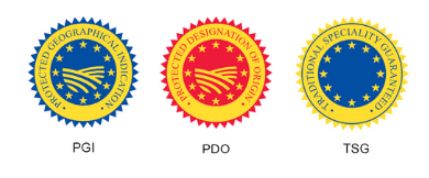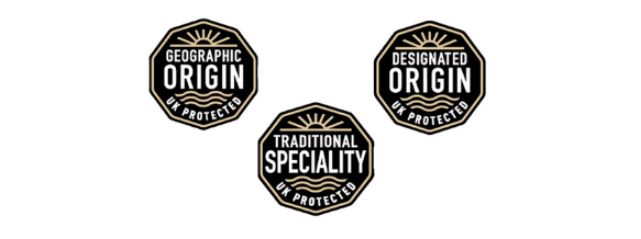Producers of food and drink can benefit from a wide array of intellectual property (IP) rights to protect their investment in developing and establishing distinctive brands, quality products as well as preserving their creative heritage.
Although standard trade marks remain the most widely-used IP tool in this sector, consumer interest around traceability and food safety, information about the provenance of food and drinks, and manufacturing processes has grown exponentially. Increased sophistication in consumers' behaviour shows that geographical indications, labels, collective marks, and certification marks offer a competitive edge to producers.
What are the options for businesses in the food and drink sector who want to protect their valuable IP?
Trade marks
Ordinary trade marks are signs typically affixed on goods or their packaging (or used in connection with services) to identify the commercial origin of a product or service from a single trader. Trade marks can be composed of words, designs, colours, sounds or the shape of goods or their packaging.
As of 1 January 2021 (marking the end of the Brexit transition period), producers of food and drink seeking trade mark protection in the UK as well as the EU27 Member States will be required to file two separate trade mark applications before the respective IP offices.
Geographical Indications
Geographical Indications (GIs) are protected names used to identify the characteristics, reputation, and quality of agricultural products, foodstuff, wines and spirits, which are attributable to their geographical origin, against misuse or imitation. Notable UK GIs include Stilton Blue Cheese, Welsh Lamb, Scotch Whiskey, and Irish Cream.
Under EU law, the name of the products with specific qualities as a result of its geographical origin can be given indefinite protection against imitation elsewhere in the EU. Individuals or groups of producers from EU Member States can apply for three different protection labels:
- PGI (Protected Geographical Indication) – the most common form of protection in the UK: an agricultural foodstuff or product must have a reputation, characteristics or qualities as a result of its production, processing or preparation in a particular geographical area (e.g. Traditional Cumberland Sausage).
- PDO (Protected Designation of Origin) – this has tighter requirements than the PGI: all three stages (production, processing and preparation) must take place in the designated area and the agricultural foodstuff or product must be made using distinct local knowledge (e.g. Cornish Clotted Cream or Native Shetland Wool).
- TSG (Traditional Speciality Guaranteed) – a product with traditional characteristics arising from its ingredients or production methods (e.g. traditional Bramley apple pie filling). The product need not be linked to a geographical area and can be produced in any EU Member State.
The good news for UK producers is that any registered product names in the EU under the EU GI schemes on 31 December 2020 will continue to be protected under the UK GI scheme. These include protected designations of origin (PDO) for agricultural products, foodstuffs and wines, protected geographical indications (PGI) for agricultural products, foodstuffs and wines and geographical indications (GI) for spirits and aromatised wines.
Quality labels under the EU GI scheme

On the 1 January 2021, a domestic UK GI scheme was launched to protect new names of food, drink, and other agricultural products, which are sold in the U.K.
UK producers will need to apply to: (i) the UK GI scheme to protect a new product name in the UK; and (ii) the EU scheme to protect a new product name in Northern Ireland and the EU.
UK producers will need to obtain registration of the GIs under the UK scheme before applying to the EU. Northern Ireland producers are not required to apply first under the EU GI scheme and can apply for the UK and EU GI protection simultaneously.
The Department for Environment, Food and Rural Affairs (Defra) will receive and manage new applications for UK GIs. There are four UK GI schemes depending on the category in which the products fall: (1) Food, agricultural products, beers, cider and perry; (2) wine; (3) aromatised wine; (4) spirit drinks. The new domestic regime will allow the following designations: protected designation of origin (PDO), protected geographical indication (PGI) and traditional speciality guaranteed (TSG).
Producers will have until 1 January 2024 to change their packaging and associated materials to display the new logos before they can sell products in the UK. The use of a UK GI logo remains optional for wines and spirits.
New UK GI logos

Collective marks
A collective mark is a sign of membership. It indicates that the goods or services offered under the mark originate from members of the same trade association. Collective marks are typically used by companies together with their own individual marks, to indicate that they are members of a certain association. Rules governing use of the mark by its members must be filed as part of the registration process. A collective mark can be a geographical name if it is capable of distinguishing the goods and services of the members of the association. Any producer whose goods or services originate in that geographical area must be allowed to join the applicant association provided that they comply with the rules contained within the regulations.
Examples of UK Collective marks

Certification marks
Certification marks guarantee certain characteristics of a product, for example food traceability and production standards. They indicate that the products in connection with which they are used are certified by the proprietor of the mark in respect of origin, material, mode of manufacture of goods, quality, accuracy or other characteristics.
Usually, certification marks are owned by trade associations or technical bodies with an interest in setting standards in their field. The owner of the certification trade mark must be competent to certify the goods and services and monitor compliance with the regulations. Any producer who meets the criteria set out in the regulations can use the certification mark on its goods. A geographical name can be registered as a certification mark if it distinguishes the goods and services certified by the owner of the mark as having the relevant geographical origin, from other goods or services which are not.
Examples of UK Certification Marks

Our expertise
Marks & Clerk LLP has a dedicated food and drink team who have a wealth of experience in advising businesses protect their valuable intellectual property rights.
The content of this article is intended to provide a general guide to the subject matter. Specialist advice should be sought about your specific circumstances.

